|
U.W.C. District Toured
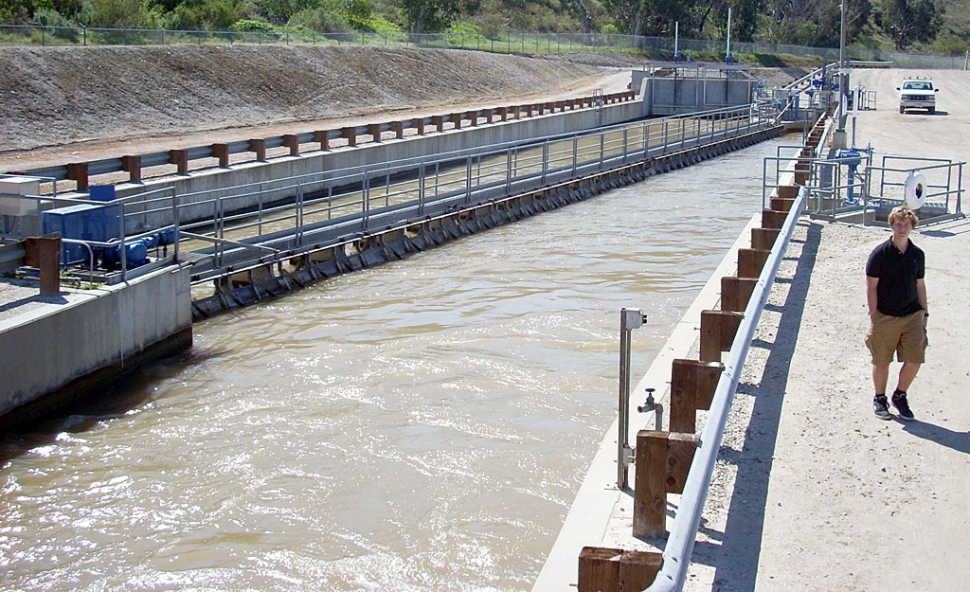 Above the diversion channels river water to the spreading grounds, large shallow reservoirs composed of sand and gravel layers that naturally filter water as it seeps back into the ground. By Margie Bartels — Wednesday, March 25th, 2009
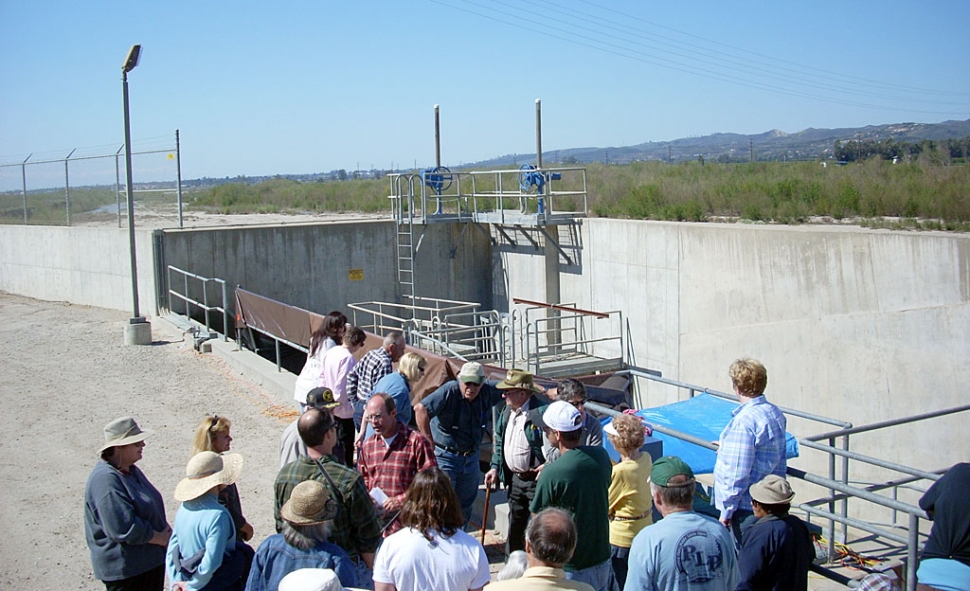 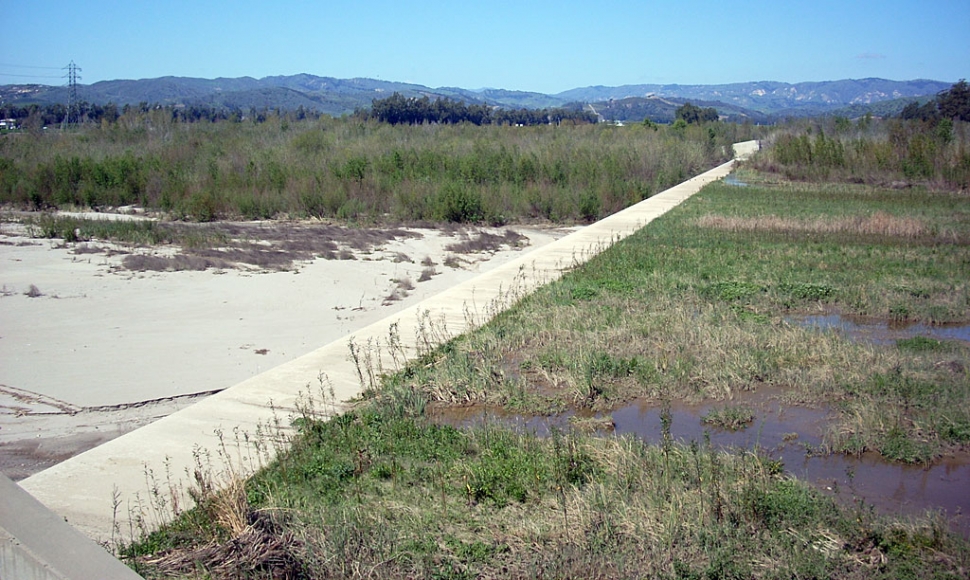 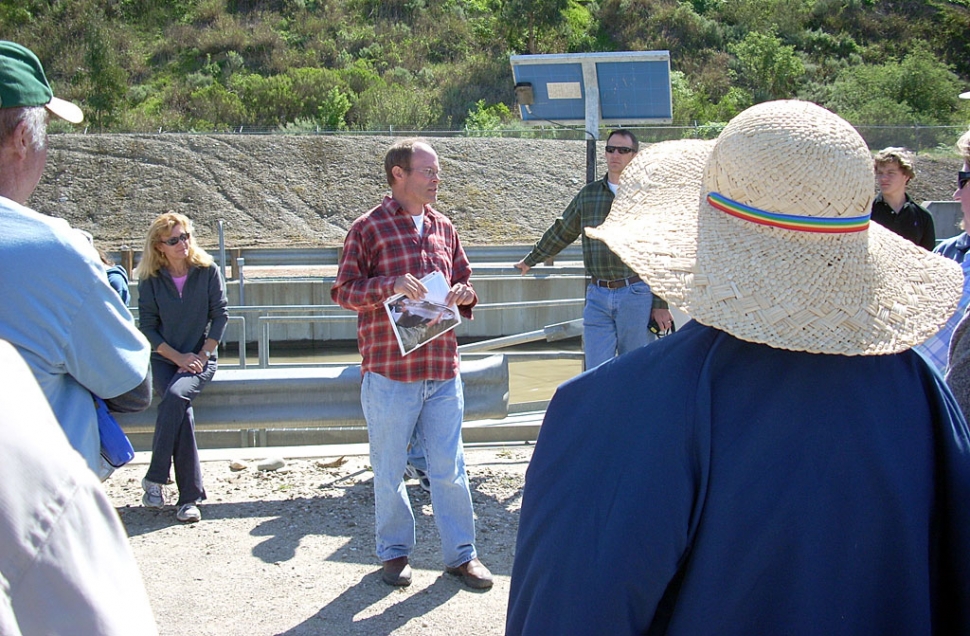 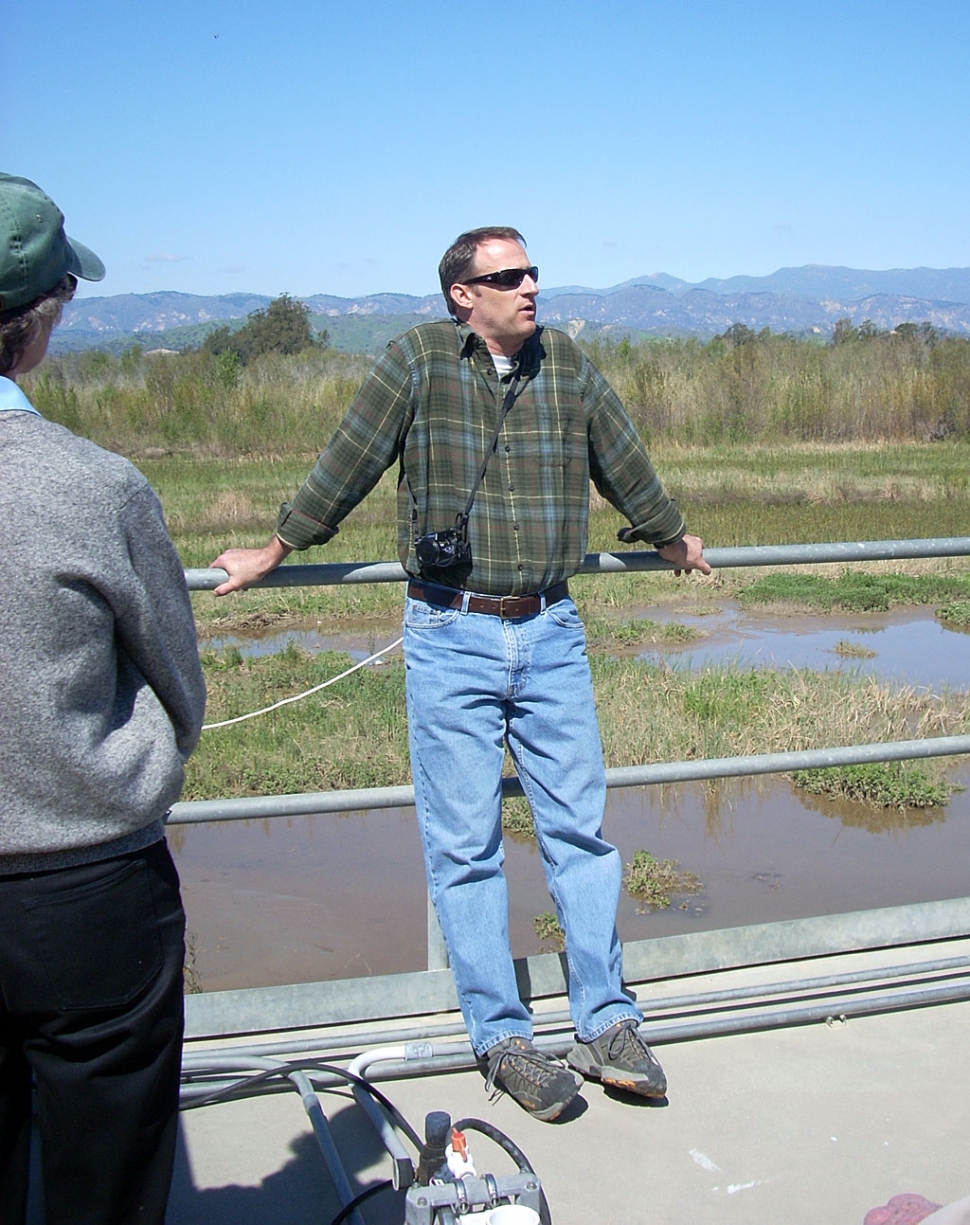 Ask any farmer or rancher in Ventura County, “What is the most important issue you face today?”, and the answer will probably be “water.” Without a consistent and adequate supply of water, agriculture cannot exist. The ongoing drought has led to drastic cutbacks in water allotments to farmers in the San Joaquin Valley, many of whom depend on water from the State Water Project or the federal Central Valley Project for their survival. So who manages our water here in Ventura County? You may have heard of the United Water Conservation District (UWCD), but are not sure what it does. How about the “Freeman Diversion”—where is that and what does it do? These questions, and more, were answered on a recent Saturday tour to the Freeman Diversion in Saticoy sponsored by the Ventura County Chapter of California Women for Agriculture. Ken Breitag, UWCD Executive Coordinator, explained the history of the UWCD, which is a public agency organized as a special district in Ventura County. Its territory covers the Santa Clara River watershed from the Los Angeles County line to the ocean. What started in 1927 as the Santa Clara River Water Conservation District by residents and landowners to manage the natural water supply and to protect it from outsiders seeking to export it, was restructured as the UWCD in 1954 to not only manage, but also to conserve, protect, and enhance the water supply. A seven-member Board of Directors (local resident Dick Richardson is a member) guides the agency in the management of its facilities in Saticoy and El Rio, as well as the Santa Felicia Dam, Lake Piru, the Freeman Diversion, and the pipeline distribution system which delivers surface water from the Santa Clara River directly to farms on the Oxnard Plain and Pleasant Valley areas. The UWCD also provides potable water to the City of Oxnard, the Port Hueneme Water Agency (including Naval Base Ventura County), and several small mutual water companies. It is funded by groundwater pumping charges, property taxes, water delivery charges, recreational fees, hydroelectric revenues and assessments. Ken discussed one of the biggest challenges facing the UWCD today—groundwater management and recharging, and salt water intrusion. The aquifer under Ventura County stores groundwater, our primary water source, which is pumped out of the ground from water wells for agriculture and domestic use. Rainfall helps to replenish groundwater, but is not enough to compensate for the water used, resulting in overdrafting of groundwater. When groundwater is overdrafted in areas close to the ocean, salt water can seep in, resulting in contamination of water and soil. In addition, crops have changed substantially over the last twenty years, especially in the Oxnard Plain. Strawberries demand heavy water usage in October when planted, so if enough surface water is not available more groundwater is pumped, increasing the likelihood of salt water intrusion. So what is the solution to this problem? More surface storage of water, and that’s where the Freeman Diversion and the Saticoy spreading grounds come in. Originally water diversion structures were earthen, which diverted about 43,000 acre-feet of water from the Santa Clara River per year. (One acre-foot of water will supply a family of four for one year). As these were vulnerable to destruction in flood years, the present concrete barrier structure was completed in 1991 at a cost of $31 million; now approximately 81,000 acre-feet of water replenish groundwater each year. The Diversion is 1200 feet long and 60 feet high (to bedrock), with 25 feet of that above the surface of the river. A plaque at the Saticoy site commemorates the “Freeman Diversion Improvement Project, constructed by UWCD, 1988-91, dedicated to the memory and water resources achievements of Vernon M. Freeman, Engineer-Manager from 1927-32.” The Diversion channels river water to the spreading grounds, large shallow reservoirs composed of sand and gravel layers that naturally filter water as it seeps back into the ground. Water stored in Santa Felicia Dam and Lake Piru is also released periodically down Piru Creek into the Santa Clara River where the Piru, Fillmore, and Santa Paula groundwater basins are recharged before the water meets the Freeman Diversion. Ken said that though our seasonal rainfall totals have improved with recent rainstorms, Lake Piru is at less than 50% capacity now. UWCD was able to keep up with irrigation water demands in the Oxnard Plain last fall, he said, but there is much concern about this fall, so they have established a moratorium on new connections to the Pumping Trough Pipeline, one of UWCD’s two agricultural pipelines, and are working with those growers to improve practices and maximize efficiencies. Ken stated that UWCD also has rights to 3,150 acre-feet of state water annually, but in 2009 is currently due to get only 15% of that. Invasive species are also a big concern, specifically the quagga mussel. According to Ken, these pests are now found “in basically every reservoir that receives Colorado River water.” They reproduce rapidly, especially in California water that is warmer and has a higher calcium level; one mussel can produce one million eggs per year! They will affix themselves to any surface, and could literally choke off the UWCD pipelines if they established themselves there. Maintaining vigilance and routinely inspecting pipelines and facilities for this creature is a priority. The tour group then caravanned the two miles to the fish ladder, and Ken introduced Steve Howard, UWCD Fisheries Biologist. An ongoing controversy in California is the rights of fish vs. the rights of people to the limited amount of water in our state. Southern California steelhead trout were listed as an endangered species in 1997. Steelhead are the ocean-going version of rainbow trout. Like salmon, steelhead live in the ocean, but when they migrate upstream to spawn in fresh water they produce young rainbow trout. Some of these young rainbow trout may in turn migrate back to the ocean to become steelhead, but others may live out their lives in fresh water as rainbow trout. It is not yet clear what determines whether young rainbow trout become steelhead or remain rainbow trout, but more is being learned, and UWCD hopes to contribute to this effort. At the fish ladder (a channel allowing adult fish to swim and leap up a series of low steps to bypass the barrier and continue upstream) a high-tech acoustic camera captures images of steelhead and every other aquatic creature accessing the ladder. Steve reported that relatively few steelhead are seen at the ladder, and it has been a subject of debate among UWCD, federal agencies and environmental groups as to what the natural population of steelhead trout is. All agree that steelhead trout are native to the Santa Clara River, but understanding the extent of that population has been severely hampered by massive plantings over the years of steelhead and rainbow trout from hatcheries. To help understand the current fish population in the Santa Clara River, UWCD hired a part-time historian to research old records and newspapers, and to sort through boxes of papers and pictures that had not been looked at in decades. Among the findings in the 700-page document that resulted is that juvenile steelhead and rainbow trout in the millions were planted from the 1880s into the 1930s. To help determine whether the current fish ladder works like it must to accommodate steelhead and other fish natural species, UWCD has assembled an independent panel of fish passage experts. This panel has already made recommendations for some minor temporary improvements and will provide UWCD and the National Marine Fisheries Service with findings that will help to determine whether major modifications, which could cost tens of millions of dollars, are necessary. In line with the Endangered Species Act, UWCD has also begun work on a Habitat Conservation Plan, which is a comprehensive plan for the Santa Clara River watershed that takes into consideration all species, and the need for river water for homes and farms, too. They are also addressing a lawsuit filed in January by CalTrout (an environmental group) against them and the U.S. Bureau of Reclamation concerning UWCD’s operation of the Freeman Diversion and its effect on steelhead trout. Operating an agency of UWCD’s size (and fighting legal battles) is expensive. Though some project costs may be funded by grants, much of the expense is passed on to water users in the form of rate increases. This is an added burden to local farmers, many of whom are struggling with higher input costs and lower prices for their crops in recent years. Saturday’s group ended their tour with a better understanding of local water issues and the important role UWCD plays in managing that water. UWCD’s website is www.unitedwater.org, and Ken can be contacted at 525-4431 or kenb@unitedwater.org to schedule a tour or make a presentation to a group. |
